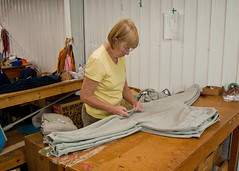 I’ve come across many different explanations of “what is a leader”, but the one that seems to make the most sense to me is that a leader absorbs complexity. Where there is chaos, ambiguity, confusion and complexity, the addition of a leader makes things simpler and clearer. People know what they should do.
I’ve come across many different explanations of “what is a leader”, but the one that seems to make the most sense to me is that a leader absorbs complexity. Where there is chaos, ambiguity, confusion and complexity, the addition of a leader makes things simpler and clearer. People know what they should do.
Unfortunately, I don’t remember where I came across this definition, but I was reminded of it again as I read Walter Isaacson’s biography of Steve Jobs. Most people would agree that Jobs was a leader in his industry and, together with his lead designer Jony Ive, has transformed many consumer electronics products.
Isaacson describes Jobs as aiming for “the simplicity that comes from conquering complexities, not ignoring them.” He also quotes Ive as saying “Simplicity isn’t just a visual style … It involves digging through the depth of the complexity … You have to deeply understand the essence of a product in order to be able to get rid of the parts that are not essential.”
Adding features to a product makes it more complex and often more difficult to use. Another quote from the book has Jobs instructing the programmer of the iDVD application: “It’s got one window. You drag your video into the window. Then you click the button that says ‘Burn.’ That’s it. That’s what we’re going to make.”
As I read these quotes, I was going “Yes!” Leadership and simplification, it became clear to me, were two aspects of the same endeavour.
Additionally, internal reports are the “product” that we deliver to company executives, and can benefit from this sort of product simplification thinking. Providing decision-makers with more options is often unhelpful – the outcome that is best is creating an environment where decisions can be made easily and confidently. However, this shouldn’t be done by merely eliminating options (e.g. just giving the “top” 2 or 3) – this provides a veneer of simplicity rather than conquering the complexities underneath. Providing thought leadership and guidance involves understanding the problem deeply.
Another way I think about strategic analysis is that it is like an “argument” – it concludes with recommendations that follow logically from the data. In this way, a simple and powerful argument can be considered elegant – a concept well known in mathematics. The computer scientist Edsger Dijkstra, commenting on mathematical elegance, said “Elegance is not a dispensable luxury but a factor that decides between success and failure.” This is probably something that Jobs would agree with.
In any case, the definition of leadership that I started with is itself an elegantly simple one: absorbing complexity.








